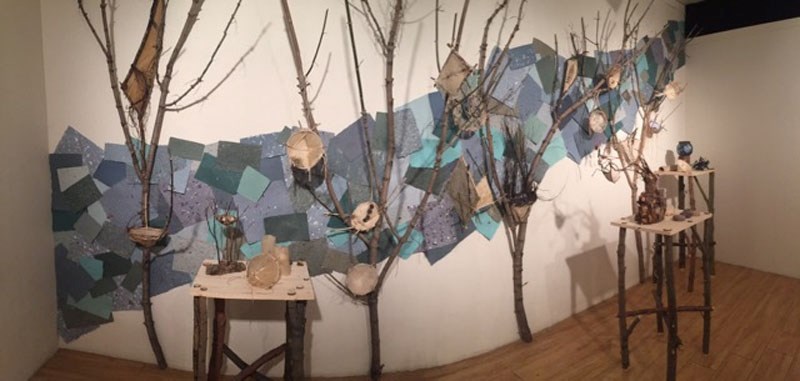In this age of computer automation, ceaseless electronic upgrades and endless new technologies, there is one guild in the city that holds fast to ancient crafts – the St. Albert Paper Arts Guild.
While most of our offices and houses are packed with paper and books, there aren’t many who still know how to make such essential items. Bookbinding, papermaking, letterpress and calligraphy are all skills that are kept alive through this diverse and enthusiastic guild.
Guild president Trudy Mason and vice-president Deirdre Allen say the group is collectively interested in anything to do with paper, which may be a wider range of art forms than most might realize. Activities like collage, paper marbling, cyanotype and printmaking all fall under the umbrella of the paper arts. And while members are interested in learning about and preserving these traditional techniques, the group is equally interested in updating these crafts and putting modern spins on the forms.
The paper arts guild is the youngest guild working under the St. Albert Place Visual Arts Council, officially established in 2007. The guild rents space in the art studios once a month on weekends. The paper arts guild started with six members but has grown to have 21 skilled crafts-people.
“We’re just a group of people who enjoy all these different activities,” explains Mason. “The guild format gives us a chance to rent space in the studio. [It] gives us a chance to have a place to come together, share ideas and inspire each other.”
The Paper Arts Guild requires new members to come with a set of skills – whether it’s bookbinding or printmaking – in order to join. This is due to the fact that guild members are often called upon to teach others in the community by making classroom visits or demonstrating techniques at various events throughout the year, like StArts Fest.
“We do educate the community to a certain extent about these things,” says Mason. “I mean, not everyone is passionate about them like we are, but when people come and see what we’re doing, they usually get really excited about it and often want to find out more about what we’re doing and how we’re doing it.
“People then have gone on to take community classes and learn things,” continues Mason. “Sometimes some of our members have offered workshops to learn about bookbinding or marbling or different things. Even if you don’t go on and do it yourself, it gives you an appreciation for something when you see the steps and what’s involved. When we’re in the studios people will walk along the Red Willow Trail there, and start peering in the windows.”
As for the creative development of the artists themselves, the guild has become an essential tool for sharing, problem solving and the growth of its members.
“You feed off each other, you really do,” says Mason. “You get excited … ideas grow.”
“When you work in isolation it can be a lonely process and sometimes it’s hard to get inspired,” adds Allen. “You could come on a weekend and you’d have really nothing to do and then you see other people who just get in there and start. Then it’s like ‘oh … I want to do that!’ You get rejuvenated.”
But both Mason and Allen agree that it’s the camaraderie that really binds members of the guild together and makes it a positive artistic space to return to over and over again.
“It’s a real friendship that happens,” says Allen. “It’s not just about the art, it’s also about caring for each other, sharing and giving so generously.”




